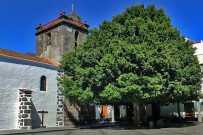-

-
We are specialists for your holidays in La Palma. With personalized assistance on-site.

Ulrich & Evelyn Roth -
Our service numbers
Write e-mail+34 822 68 00 89
+49 7442 819 85 90
We're available from Monday to Friday from 10:00 a.m. to 6:00 p.m., and Saturdays from 10:00 a.m. to 1:00 p.m.
-
Accommodations
- with pool 95
- on the seaside 48
- with internet 216
-
Northwest >>
126
- Aguatavar 7
- Arecida 6
- El Castillo 1
- Garafía 4
- Las Tricias 6
- Puntagorda 41
- Tijarafe 21
- Tijarafe Costa 6
- Tijarafe El Jesús 11
- Tijarafe La Punta 21
- Tinizara 2
-
Aridane Valley >>
218
- Celta 7
- Charco Verde 3
- El Paso 23
- Hermosilla 1
- La Bombilla 2
- La Laguna 12
- Las Manchas 22
- Las Norias 11
- Los Llanos de Aridane 23
- Puerto de Naos 43
- San Nicolas 8
- Tacande 2
- Tajuya 9
- Tazacorte Costa 5
- Tazacorte Puerto 13
- Tazacorte Villa 22
- Todoque 12
-
South >>
30
- Fuencaliente 6
- Las Indias 4
- Lomo Oscuro 1
- Los Quemados 6
- Salemera 2
- Tigalate 2
- Villa de Mazo 9
- East >> 16
-
Northeast >>
4
- Barlovento 2
- Los Sauces 1
- Puntallana 1
Indian Laurel
12 January 2016"laurel de indias"
"laurel de indias"
Indian Laurel / Chinese Banyan/ Curtain Fig
Ficus microcarpa, syn. Ficus nítida / Ficus retusa
Periodically, tree top pruning makes laurel trees shoot even stronger - the trees of the mulberry family (Moraceae) provide shade on various places of the Canary Island La Palma.
-
Chinese Banyan or Curtain Fig
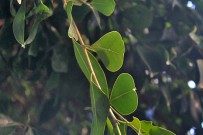
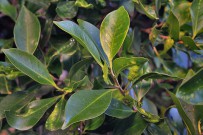 Despite of its name, the Indian Laurel is not part of the laurel family (Lauraceae), but belongs to the mulberry family (Moraceae).
Despite of its name, the Indian Laurel is not part of the laurel family (Lauraceae), but belongs to the mulberry family (Moraceae).
Its native habitat are the Tropics in Asia. Ficus microcarpa (synonyms Ficus nítida or retusa) in English are also known as Chinese Banyan or Curtain Fig.
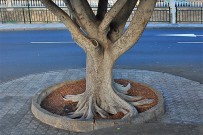
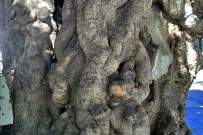 It is an evergreen tree and grows 10-30 meters tall.
It is an evergreen tree and grows 10-30 meters tall.
Its leaves are small and sturdy, dark green and shiny. The smooth bark of the strong trunk is light grey and sometimes aerial roots are formed.
The small blossoms are whitish yellow and the globular fruits change colour from green to dark and are eaten by birds.
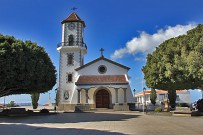
Between America and Europa the tropical tree also found a new home on the Canary Islands.
Magnificent specimen are found on the Plaza de España in Los Llanos. Already by mid of the 19th century, Palmerian emigrants sent seedlings from Cuba to the island by ship.
Shortly afterwards, the shady trees adorned squares, streets and also gardens of wealthy families.
 The popularity of laurel trees is proved by the fact, that they are found all over the island except in Los Llanos.
The popularity of laurel trees is proved by the fact, that they are found all over the island except in Los Llanos.
In Santa Cruz de La Palma ancient and young laurel trees adorn the Plaza de La Alameda, several church squares and public green areas.
Mild temperatures on the Canary Islands have a positive impact on its flourishing.
"Laurel de Indias" grows in the sun or partial shade and benefits from a fertile and well drained soil. Laurel trees neither tolerate temperatures below 15 degrees Celsius nor frost. However, dry climate doesn't cause him any harm.
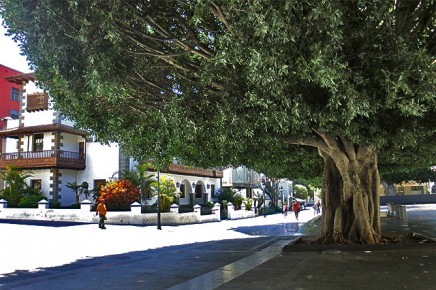 The Indian Laurel forms a wide spreading, dense crown.
The Indian Laurel forms a wide spreading, dense crown.
From time to time it requires pruning. Imposing „laureles“ then sometimes appear barren , but soon regenerate and form new, strong shoots.
Ficus microcarpa is also well suited as a bonsai or pot plant for the terrace and winter garden.
However, during the winter months it must be switched to a warmer place. Laurel trees can either be grown from seed or propagated by cutting.
Photos: Ines Dietrich, Uka Rösch


